
By its very nature, the play of
Call of Cthulhu is peripatetic, the Player Characters or Investigators travelling from strange mystery or occurrence to the next, their investigations and discoveries exposing them to the stark reality of cosmic horror, with little in the way of life in between, especially if playing one of the roleplaying game’s massive campaigns like
Shadows of Yog-Sothoth or
Masks of Nyarlathotep. That changes with
Call of Cthulhu: Arkham. This is a supplement that presents the crown—if the jewel is Miskatonic University—in the milieu of Lovecraft’s fiction, the New England town at its heart, witch-haunted and fabled, rich in secrets and conspiracies and crime. It appeared in stories such as ‘Herbert West—Reanimator’ and ‘The Shadow Out of Time’, and it was from here and Miskatonic University that the disastrous 1930 expedition to the Antarctic was launched, as detailed in
At the Mountains of Madness, followed by the Starkweather-Moore expedition of
Beyond the Mountains of Madness. It is a new supplement for
Call of Cthulhu, Seventh Edition from
Chaosium, Inc., one that details the town and its history, its inhabitants, its shops and its societies, and much, much more. However, it is not a new supplement for
Call of Cthulhu, having originally been published in 1990 as
Arkham Unveiled. Designed by the late, great Keith ‘Doc’ Herber, Arkham Unveiled introduced and laid the groundwork for the Lovecraft Country series of setting supplements and anthologies that followed in the nineties and then again in the noughties with the superb anthologies from Miskatonic River Press,
New Tales of the Miskatonic Valley and
More Adventures in Arkham Country, again under the aegis of Keith ‘Doc’ Herber. In their wake has followed a raft of scenarios set in and around Arkham and across Lovecraft Country, enabling Investigators to experience the Mythos on their doorsteps. The republication and update of Arkham means that it can happen all over again.
Call of Cthulhu: Arkham begins with an acknowledgement of its own history and the credit due to Keith ‘Doc’ Herber and others. Not only that, but it retains Herber’s own introduction from 1990 edition alongside that of Mike Mason’s in 2023, and in the third and final of its three appendices, it provides a good bibliography that lists supplements and anthologies published by both Chaosium, Inc. and those of its licensees. This topping and tailing is a respectful acknowledgement of both
Call of Cthulhu’s own publishing history and the contributions of authors and licensees to Lovecraft Country canon over the years. Chaosium, Inc. should be commended for including both. Not only does it show appreciation for the history of the roleplaying game and this supplement in particular that veteran players of
Call of Cthulhu will be pleased to see, but it provides context and history for those new to the roleplaying game.
The actual description of Arkham begins with an overview and history. This gives a description of its general geography, its settlement by more liberal thinkers from Salem and Boston in the latter seventeenth century, its poor treatment of the indigenous peoples, its growth as a fishing port despite it being a river port on the Miskatonic River and an industrial town with its textile mills and the town’s fall in fortunes as those industries declined, all the way into the twentieth century and the Jazz Age. The opening year is 1922 rather than the 1928 of the earlier versions, so that the Keeper and her players can make the greatest use of the decade. Today, Arkham is recovering from the losses of the Great War only ended a few years before, much of its wealth and reputation reliant upon the early founding and prestigious reputation of Miskatonic University. There are notes too on climate, general government, annual festivals, firearm regulations, and crime, including the town’s two organised mobs, one working to replace the other. Dan O’Bannion’s Irish mob now controls the flow of bootleg whisky into the town, whilst Giuseppe ‘Joe’ Potrello’s gang has been but displaced from Arkham. Here too, is an overview of the major towns of the Miskatonic Valley, some like Innsmouth and Kingsport having their own supplements. This is a mix of fictional and real locations, but together they provide a snapshot of what is to come in future supplement exploring up and down the Miskatonic Valley.
For the Investigator, there are options in terms of background and skills. Arkhamites can have their own significant people and meaningful locations, and there are skills particular to the city and new to
Call of Cthulhu. The Arkham skills are Navigate (Arkham) and History (Arkham), whilst the new skills are Reassure, which provides calming words and intuition as a means of recovering Sanity, and Religion, a general skill which can also be very useful for the Priest and Missionary Occupations. Investigator skills can be improved by attending various institutions, for example, the Ivan Toledo School of Dance for Art (Dance) or the N.E. School of Bookkeeping for Accounting. This can be a mix of night classes, self-improvement, or simply hobbies. Popular with players are likely to be the Arkham Gun Club or the Miskatonic Ladies Shooting Club, the latter coached by the Arkham Police Department. Notably, the resulting skill increases from such activities need not require skill checks to improve as in standard play, but simply be rewarded for time spent learning and practicing the skills. For example, the owner of Ballard’s Auto Lot, Grainger Ballard, will not only sell or rent an Investigator a car, but offer a course of driving lessons. At the end of two weeks or ten lessons, the Investigator will simply gain a number of points in the skill depending upon his existing skill value. This has the extra effect of enhancing the Investigator’s independence of movement beyond Arkham and into the wider Miskatonic Valley and Lovecraft Country, perhaps in readiness for future supplements and scenario anthologies.
There is a list of clubs, societies, and Investigator organisations that they can involve themselves in, such as Arkham Chamber of Commerce or Miss Andrews’ Social Parlor, where retired ladies can congregate and socialise. There is the option too for Arkham Reputations, which can levy a penalty or grant a bonus die when it comes to interacting with folks in Arkham and up and down the valley, on skills such as Fast Talk or Persuade, and even on Credit Rating. This, of course, is dependent upon the actions of the Investigators and if they come to the attention of the authorities or the Arkham rumour mill. All Investigators begin as Respectable, but their public behaviour, accompanied by a successful Luck roll, can raise this to Distinguished and even Celebrated, but with a failed Luck roll, send it plummeting to Shameful or even Notorious. This though, is only temporary, but similar repeated and public behaviour can cement the new Reputational status and its accompanying Bonus or Penalty for longer.
The day-to-day nature of life in Arkham is covered in guides to getting around the town—primarily on foot, taxicab, and trolley with its confines, and by bus and by rail beyond, by finding accommodation with a list of hotels and boarding rooms of varied quality and price, and of finding employment or help. In the case of the latter two, this will be tied to one of the hundreds of places of business and work described in the gazetteer that makes most of
Call of Cthulhu: Arkham. This could be going to Markwil’s Theatrical Supplies to purchase the wigs, makeup, and costumes, whether for a costumed ball or the use of the Art (Acting) skill, the Science Hall at Miskatonic University to consult with a mathematician about a code, or attending weekly sessions with Doctor Allen Turner for help with a psychiatric issue. These are all means to pull an Investigator into the ordinary life of being an Arkhamite, of working and having a social life, of giving him a life other than making enquiries about the outré.
The bulk of
Call of Cthulhu: Arkham is dedicated to describing the many businesses, residences, institutions, and places to be found across the town’s nine neighbourhoods. They are preceded by a directory which numbers and categorises everything for easy reference, and each neighbourhood begins with an overview and not only a very attractive map, but a very good map of the neighbourhood that depicts it isometrically. Each map is accompanied by a list of the points of interest to be found within its confines. Then the numbered entry for each location is given a description, which also includes a list of the notable folk to be found there. That though, is the extent of the simplest of entries. Many others include sections that give the benefits of visiting the location for the Investigators, examine the historical nature of the location, the strangeness to be found within or below, and also ‘Look to the Future’, which charts the history of the location and its inhabitants over the course of the next decade. This can be mundane or it can be Mythos related, tied into the particular events of Lovecraft’s stories. Some also include the stats and thumbnail portraits of particular NPCs, and notably, these have a list of personality traits that quickly enable the Keeper to grasp the nature of each NPC and help portray them. Even the simple list of the notable folk can include the core skill for each NPC listed. Beyond the immediate environs of Arkham, there are descriptions of the Town Heap, the Blasted Heath at Clark’s Corners, Goody Fowler’s cottage, and Arkham Airfield. Throughout there are cultural notes and details aplenty. This includes lists of films, novels, and songs that will be released throughout the twenties, but there are interesting sections on the importance of wearing hats and student life at the Miskatonic University as well.
Of course, the pride of Arkham is Miskatonic University, which stands proud in its own neighbourhood, Campus. The Campus description will perhaps be the most familiar to
Call of Cthulhu, it previously having been visited by numerous supplements all of the way back to 1983’s
Pursuit to Kadath from T.O.M.E. In terms of the Mythos, the most notable location is the Orne Library and its restricted section overseen by Doctor Henry Armitage and the University Exhibit Museum, and both locations are fully detailed and given floorplans as well. There is more than enough information here should any Investigator want to visit its hallowed halls and consult with an expert or visit its museum. There is probably not quite enough information to run a long-term campaign based around the university, but doing so is not impossible. However,
Call of Cthulhu: Arkham would be an all but mandatory companion to any campaign based at Miskatonic University, expanding as it does, upon the town and its various neighbourhoods beyond the grounds of the campus. More recently, this chapter would work well with
A Time to Harvest: Death and Discovery in the Vermont Hills – A 1930s Era Campaign Across New England and Beyond, as would the rest of the book.
In terms of the Mythos,
Call of Cthulhu: Arkham does two things. Primarily and overtly, it presents an overarching threat, that of the Arkham Coven. This strongly ties back into H.P. Lovecraft’s fiction with ‘The Dreams of the Witch-House’ and its antagonist, Keziah Mason, who continues to lead the Coven today, some two centuries later. She rarely makes an appearance at the coven’s gatherings, but she and the other twelve members are fully statted out, complete with motivations, spells known, and modifications for
Pulp Cthulhu: Two-fisted Action and Adventure Against the Mythos. Apart from Keziah Mason, they are all woven in all levels of society across Arkham, including banks, social clubs, shops, schools, and more, so the Investigators may come across members of the coven in walks of life and not know it. Plus, there is scope for the Keeper to create associate members who can serve all manner of roles in a campaign. That said, all thirteen members of the Coven are very powerful, both in terms of the Mythos and the mundane world, often holding positions of some authority, so will make very tough opposition for any Investigators looking into them. The inclusion of a fully detailed associate member might have provided the Keeper with an example and a lesser threat for the Investigators to face. Beyond that and more overtly, the Mythos is woven into the fabric of Arkham and its environs, such as the ‘Imperfect Resurrected Thing’—a holdover from Herbert West’s experiments that haunts the Railroad Properties; the Old Wooded Graveyard on Hangman’s Hill where the vengeful ghost of the witch, Goody Fowler, is said to manifest; the strange source of items secretly on sale at the antique shop, Unconsidered Trifle; the tunnels which run below the town’s sewers—also detailed—that are home to the strange Arkham Creepers; Dombrowski’s Boarding House, a.k.a. the Witch House, where the events of ‘The Dreams of the Witch-House’ will play out. Of course, the chapter on the Miskatonic University includes details of Doctor Henry Armitage and the surprising number of Mythos tomes held by the Orne Library. The lengthy section includes a discussion of who knows about the Mythos at the university and when.
One of the difficulties in presenting the historical period in which
Call of Cthulhu: Arkham is set is dealing with its lack of diversity and representation. Here the authors strike a balance, but encourage the Keeper and her players to make choices. For example, the personal/romantic relationships and sexuality of named NPCs is intentionally left blank for the Keeper to decide what best fits her campaign and the book makes clear that LGBTQI+ people do live and work alongside their fellow heterosexual Arkhamites, but given the historical period and its social attitudes, they are very careful about whom they reveal this to. So, they are present in the town by intent, and the Keeper is encouraged to bring them into play. The town’s minority communities, whether of colour or culture, are accorded a similar treatment, the authors pointing out that they are subject to negative attitudes by some parts of Arkham’s white majority, but rather than focus upon that, the Keeper and her players should focus upon the diversity and richness of those cultures and communities. One example of this is the fact that that the racist attitude of Arkham’s bank managers make it very difficult for members of the African-American community in East-Town to obtain loans and mortgages, preventing property ownership and the improvement of businesses, but the positive effects of the Harlem Renaissance do work their way into the community in later years of the decade, encouraging creativity and artistic output. It would be great to see this explored in later supplements and anthologies in more detail. Ultimately,
Call of Cthulhu: Arkham explores these potentially difficult issues in a broad manner, acknowledging them in what is an overview, but leaving it up to the Keeper and her players as to how to address them or change details as is their wont.
Rounding out
Call of Cthulhu: Arkham is a set of three appendices. The first provides a timeline of the town and a table of typical Arkhamite names, the second collects game aides, such as the weather and Reputation rules, travel times, and generic NPCs in one place for easy reference, whilst the last is the aforementioned and excellent bibliography.
Call of Cthulhu: Arkham also includes three extra items. The first is a Special Edition of the Arkham Advertiser, a copy of the town’s newspaper that can be used to help bring the town to life and pique the interest of the Investigator and his player. The intention is to use that interest as a hook that will lead the Investigator to look into a story further and so pull him into Arkham life and society. The other two are a pair of double-sided maps. One depicts a street plan of Arkham as if done as a business directory, whilst on the other side is a highway map of Massachusetts. The other shows a street plan for the Keeper with all of the locations in the book marked, with a topographical map of the outskirts of town on the other. Both sets of maps are down in full colour and on sturdy paper and very nicely done. The Special Edition of the Arkham Advertiser is done on newspaper paper and has a fantastic verisimilitude to it.
Physically,
Cthulhu: Arkham is very well presented. The book is clean and tidy, and despite it consisting of hundreds and hundreds of individual entries is very to read. The cartography is excellent and the artwork great.
So the question is, is
Call of Cthulhu: Arkham missing anything? Most obviously a scenario. Hopefully that will be addressed with new supplements and anthologies containing scenarios old and new. That said, there are already scenarios available and for
Call of Cthulhu, Seventh Edition. This includes the aforementioned
New Tales of the Miskatonic Valley, but there are two scenarios in the
Call of Cthulhu: Keeper Screen. A table of places where the Investigator could go to increase his skills might have been useful though.
Call of Cthulhu: Arkham is designed as two things. First, a sandbox campaign setting with locations and NPCs and strangeness that the Investigators and their players can engage with and the Keeper can develop into scenarios and mysteries of her own. Second, as an introduction to Lovecraft Country and a jumping off point for supplements set up and down the Miskatonic Valley, old and new.
Call of Cthulhu: Arkham is more successful at the latter than the former. This is not to say that
Call of Cthulhu: Arkham does not provide the necessary information to do that, because it does. Rather that it leaves the Keeper with a great deal of work to develop that information into something playable. Far from impossible, but daunting nevertheless, especially given that
Call of Cthulhu is not usually designed to do that. There can be no doubt that the shift from the more nomadic play style of
Call of Cthulhu to the location play style of
Call of Cthulhu: Arkham and Lovecraft Country is radical. Here though,
Call of Cthulhu: Arkham shines in setting that up, establishing Arkham as a place and bringing its places, peoples, and peculiarities to life and then pulling the Investigators into that life, giving them homes, jobs, and social lives. It sets them up to notice the aberrations of Arkham, whilst laying the groundwork for future releases for Lovecraft Country.
Call of Cthulhu: Arkham is a truly impressive release for
Call of Cthulhu, Seventh Edition. It takes a classic supplement and updates it for both the current rules and to make accessible and useable and succeeds on both counts. It presents a charming façade of an old New England town behind which lurks the secrets and horrors of the Mythos, just waiting for the Investigators to discover if they take a peek too far. It provides a home and a life beyond investigations into the outré for the Investigators and so offers an opportunity for the players to roleplay them beyond maddening encounters with the Mythos, only of course, discover that such encounters can found lurking close to home. Above all, it lays the groundwork for the whole of Lovecraft Country, ready to be explored in future releases and by the Investigators from their homes in Arkham, whilst on their doorstep, it gives both players and Investigators the opportunity to investigate some of H.P. Lovecraft’s most well-known stories.
 $3.97 in the 80s. A LOT more now.One topic spans the years and editions of Dungeons & Dragons and many other Role-Playing Games.
$3.97 in the 80s. A LOT more now.One topic spans the years and editions of Dungeons & Dragons and many other Role-Playing Games.




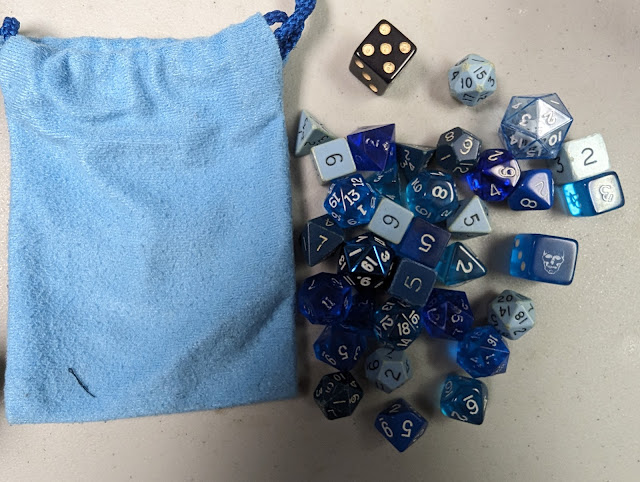



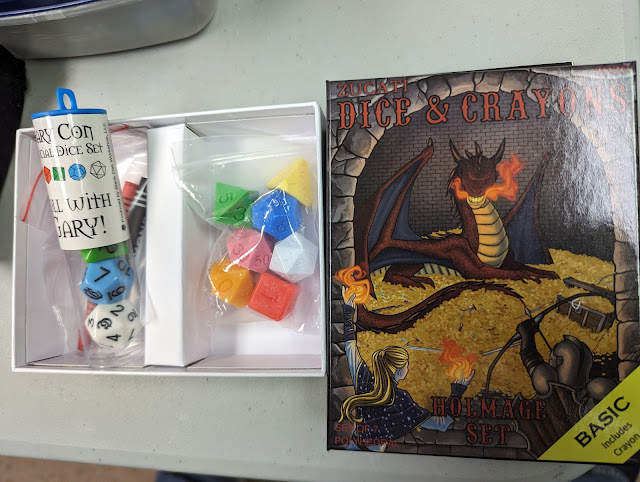



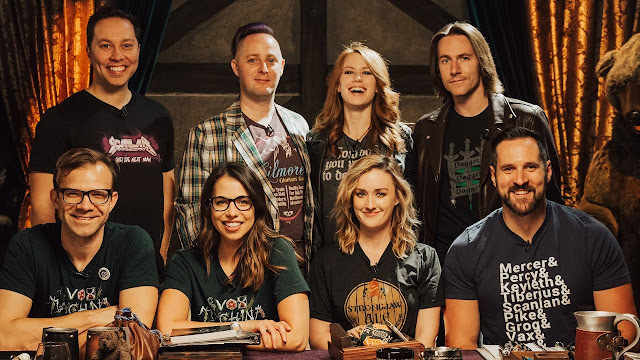


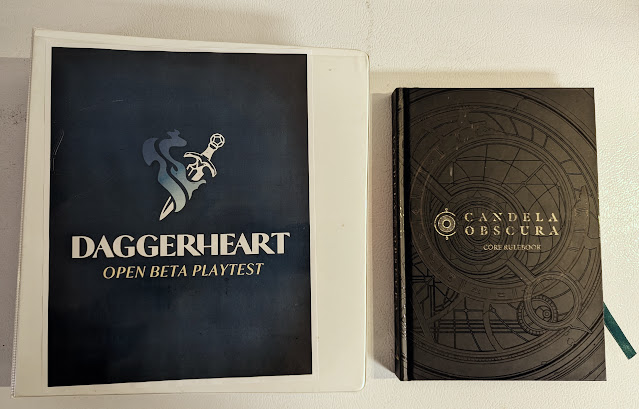



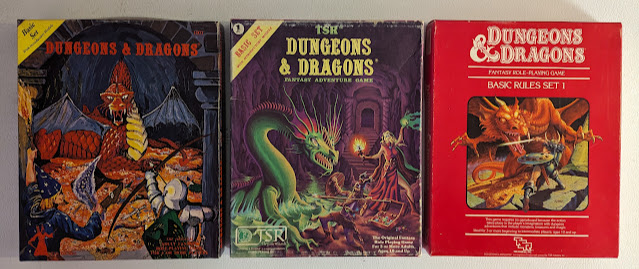


.jpg)
























